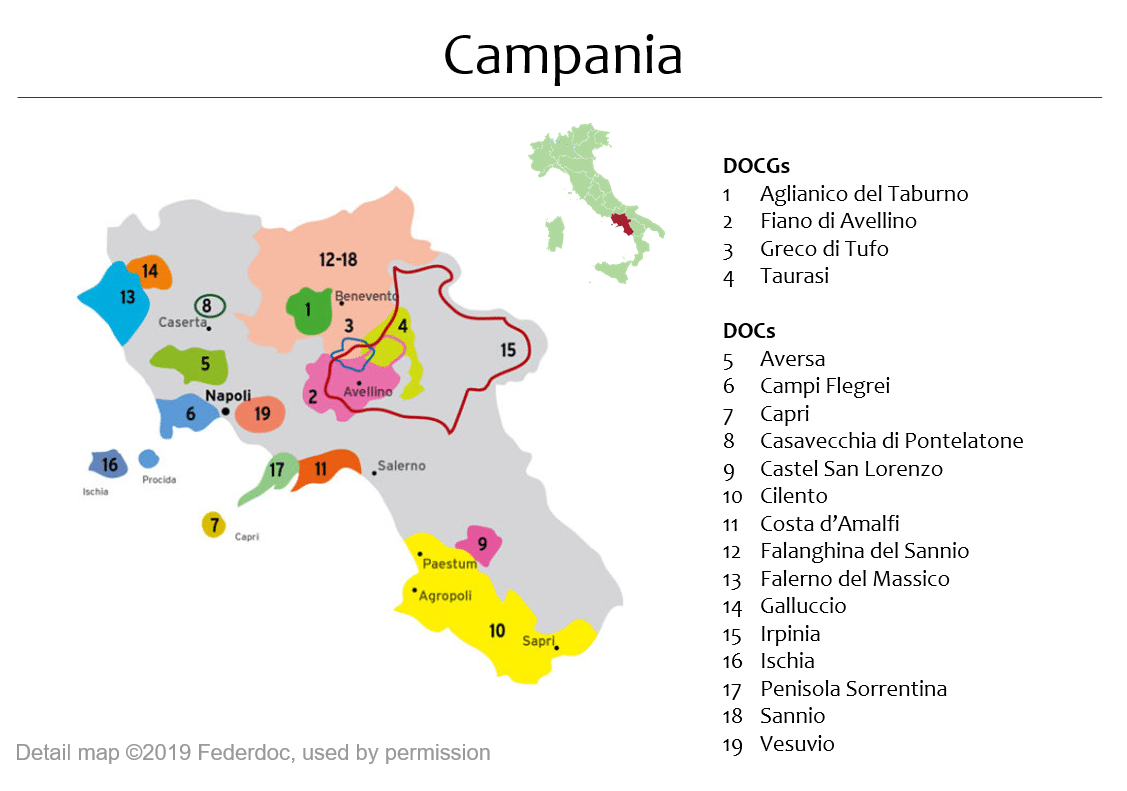Falanghina del Sannio DOC
Synopsis
History: Established as a DOC in 2011, incorporating the Falanghina-based wines of the former DOCs Guardia Sanframondi (Guardiolo), Sant’Agata dei Goti, Solopaca, and Taburno (the other wines from those DOCs are now part of the Sannio DOC)
Vineyard Area: 1,359 ha / 3,357 acres (2021)
Production: 46,100 hl / 512,100 cases (5-year average)
Principal White Grape Varieties:
Styles and Wine Composition
WHITE WINES
- Bianco (Wh): Minimum 85% Falanghina + OANWG
SPARKLING WINES
- Spumante or Spumante di Qualità (WhSp): Minimum 85% Falanghina + OANWG
- Spumante di Qualità Metodo Classico (WhSp): Minimum 85% Falanghina + OANWG
DESSERT AND SPECIALTY WINES
- Vendemmia Tardiva (Wh): Minimum 85% Falanghina + OANWG
- Passito (WhSw): Minimum 85% Falanghina + OANWG
Subzones and Other Geographic Terms
- Guardia Sanframondi (Guardiolo)
- Sant’Agata dei Goti
- Solopaca
- Taburno
Significant Production Rules
- Grapes for Passito must be dried on or off the vine to achieve a minimum potential alcohol level of 16.0%
- Spumante di Qualità Metodo Classico must undergo second fermentation in bottles; Spumante and Spumante di Qualità must be fermented in autoclaves (pressurized tanks)
- Minimum alcohol level: (For subzones, add 0.5% for each category) 11.0% for Bianco; 11.5% for sparkling wines; 13.0% for Vendemmia Tardiva; 16.0% (potential) for Passito
- Residual sugar: Spumante may range from extra brut to extra dry; Metodo Classico may be extra brut or brut
- Aging: For Passito, minimum approx. 3–5 months (ERD = June 1, V+1); for Metodo Classico, minimum 12 months on the lees (ERD = November 15, V+1)
Last Disciplinare Modification:
11/30/2011
